
StewMac Launches Guitar Pedal Line With Four Hot Models
Building on the foundation of the company’s acclaimed pedalkits, StewMac has introduced a line of ready-to-play, fully finished guitar effects pedals.The newly launched models include StewMac’s four most popular pedal designs: the Sun Fuzz; Lightcycle Phasor II optical phaser; Two Kings Boost dual overdrive; and Ghost Drive transparent overdrive. Each pedal delivers classic tone at an incredible price.Sun FuzzThere have been countless replicas and reimaginations of the classic Fuzz Face pedal. StewMac’s Sun Fuzz gives you the control and tone shaping you’ve always wanted from the originals, and it’s a must-have for fans of Hendrix, Clapton, or Gilmour’s tone.
This circuit is one of the foundational tones for electric guitar, but the germanium powered originals can be hard to control and don’t play nice with many pickups and amps—even temperature can completely change the tone! To create a more predictable, controllable, reliable tone, we’ve swapped the germanium transistor for a silicon BC-108, giving the pedal a brighter tone, more gain, and enhanced touch sensitivity.
Priced at $99.99, the Sun Fuzz is a no-brainer for fuzz fans who don’t want to shell out $200+ for the originals. Key features include: Improved bias control and tone shaping compared to the originals. Silicon BD-108 transistor. Versatile fuzz with simple controls for volume, fuzz, and tone. Sounds great with humbuckers, single-coils, and P-90s alike. Two Kings Boost Dual OverdriveInspired by one of the most sought-after dual overdrives on the market, players like John Petrucci, Gary Clark Jr., Samantha Fish, and Warren Haynes have raved about the originator of this circuit, the King of Tone. Now, you don’t have to wait to add this circuit to your rig. StewMac’s Two Kings is transparent but still warm and gritty, with a full range of frequencies available—no matter the setting. It won’t overpower the unique tone of your guitar and amp—it just makes it better. The Two Kings is actually two pedals in one, with selectable boost and distortion through internal dip switches. The two sides of the pedal are completely independent—it’s easy to find the sweet spot for each side. With knobs for gain, volume, and tone you can get anything from simple boost, gritty overdrive, and even distortion in a flash. If you want to go deep, you can further tailor the sound with the internal controls for infinite tone tweaking. Priced at $159.99, the Two Kings is an affordable and authentic alternative to the pricey, hard-to-get original. Key features include: 2-in-1 pedal.Maintains core tone of guitar and amp.Effortlessly provides boost, gritty overdrive, and distortion. Lightcycle Phasor II This isn’t just another phase shifter—it’s the unmistakable sound of deep, liquid movement that defined an era. Inspired by the MuTron Phasor II from the 1970’s this studio-quality, all-analog optical phase circuit set the gold standard for smooth, sweeping modulation. StewMac has recreated this timeless classic to bring your tone to life with the same lush, organic depth that graced the pedalboards of legends. You can recreate those complicated textures live—from a rotary speaker shimmer to wild spacey soundscapes, every knob twist sparks inspiration. On the front are controls for depth, rate, and feedback, letting you dial in anything from subtle swirl to rapid tremolo and synthesizer sounds. For even more flexibility, two internal controls let you dial in the sweep and intensity of the phased signal.Priced At $119.99, the Lightcycle Phasor II is an authentic and affordable alternative to the original. Key features include:Studio-quality optical phaser. Controls for depth, rate, and feedback. Two internal controls to adjust the sweep and intensity of the phased signal.Ghost DriveNot just another “klone”, the StewMac Ghost Drive pedal is astonishingly close to the famed Klon Centaur Professional Overdrive. StewMac scoured the globe to source the nearly impossible to find (electronically identical) 1N34A germanium diodes that many claim were the heart and soul of the mojo behind the original Klon. Also, unlike so many modern klones that rely on surface mount components, the Ghost Drive is pure old school using through-hole components and traditional solder joints. The Klon was made famous by countless players like Joe Perry, Mike McCready, Joe Bonamassa, John Mayer, Nels Cline and more. Like the original, StewMac’s Ghost Drive is extremely easy to use: just gain, treble, and output. The gain is where the magic is by adding sweet saturation and harmonics while retaining the character of your amp. The treble acts as a boost or cut, allowing you to dial in the perfect mid-range for your tone.Priced at just $129.99, the StewMac Ghost Drive provides a nearly identical tone for just a fraction of the price of the originals. Key features include:Through-hole components and traditional solder joints just like the originals.The electronic identical 1N34A germanium diodes in the originals.Works great as a clean boost as well as a transparent overdrive. Buffered bypass.For more information about StewMac’s new line of pedals visit stewmac.com
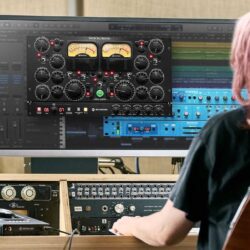
Now Available: UAD Shadow Hills Mastering Compressor Class A and Maag EQ4 MS Plug‑Ins
Universal Audio, a worldwide leader in audio production tools, today announced the release of the Shadow Hills Mastering Compressor Class A and Maag EQ4 MS plug‑ins. As a part of the Apollo and UAD v11.8 software update, these plug‑ins deliver enhanced sonics, with new features and workflows for modern music producers and engineers, or those looking to upgrade their current Shadow Hills or Maag plug‑ins.UAD Shadow Hills Mastering Compressor Class A – $169 USD“Shadow Hills Class A and Maag EQ4 MS give music creators access to two rare and unique sounds in the UAD catalog,” says Lev Perrey, VP of Product at Universal Audio. “Beyond the updated UI, they add entirely new sonics and workflow capabilities, expanding what’s possible for customers working with Apollo interfaces and UAD hardware.”The Shadow Hills Mastering Compressor Class A plug‑in is a meticulous emulation of the legendary “Red” edition hardware — of which only 50 units were ever built. It delivers the coveted dual‑stage optical and discrete compression stages, plus switchable Nickel, Iron, and Steel output transformers so you can dial in open and airy detail to thick, saturated tone.Sonically enhanced with Tolerance Modeling Technology by Brainworx (TMT), the updated Shadow Hills UAD plug‑in features the subtle channel‑to‑channel variations of the real analog gear, giving mixes added depth and realism. Customers can also access powerful features including Mid/Side processing, Stereo Width control, Mono Maker, Parallel Mix, scalable UI, and more — going far beyond the original hardware.Shadow Hills Mastering Compressor Class A – Key FeaturesUpdated version of rare Class A dual‑stage optical and discrete compressor plug‑inTMT technology by Brainworx adds subtle channel‑to‑channel variations for greater analog realismSwitchable Nickel, Iron, and Steel output transformers for unique tone shapingEnhanced Class A circuitry with 1–3 dB hotter presence than the original UAD plug‑inPlug‑in only features: Mid/Side, Parallel Mix, Stereo Width, Mono Maker, Sidechain FilterUAD Maag EQ4 MS — $129 USDThe Maag EQ4 MS plug‑in brings life to a classic UAD plug‑in title. Along with its iconic Air Band, the new version features Mid/Side processing, expanded frequency choices, selectable Q values.Ideal for adding presence to vocals and instruments, the Maag EQ4 MS now brings extra clarity and depth to mixes thanks to TMT technology by Brainworx — which captures the real‑world channel variations that add analog realism unlike other matched digital EQs.Maag EQ4 MS – Key FeaturesUpdated edition of the legendary EQ4 plug‑in with expanded sonics and flexibilityTMT technology by Brainworx captures natural channel‑to‑channel differences for extra width and dimensionIconic Air Band delivers transparent, musical high‑end sheen for vocals and instrumentMid/Side processing tools for precise control of stereo image and depthExpanded frequency options and selectable Q values for refined tone shapingAlso included in the UAD v11.8.1 update, MIDI Learn is now available for all UAD DSP plug‑ins, giving customers hands‑on control of plug‑in parameters with compatible MIDI controllers. With a simple click, touch, move workflow, music producers working in Apollo studios with UAD plug‑ins can map knobs and faders in seconds — eliminating tedious menu diving.Pricing & Availability The Shadow Hills Mastering Compressor Class A plug‑in is available for $169 (new customers) or $39 (upgrade price).The Maag EQ4 MS plug‑in is available for $129 (new customers) or $39 (upgrade price).Both plug‑ins, along with MIDI Learn functionality, are included in the Apollo & UAD v11.8.1 software update, available September 4, 2025.Learn more about Shadow Hills Mastering Compressor Class A:uaudio.com/products/shadow-hills-mastering-compressor-class-aLearn more about Maag EQ4 MS:uaudio.com/products/maag-eq4-msLearn more about UAD Plug‑Ins:uaudio.com/collections/uad-pluginsDownload images and press materials:u.audio/uadshadowhills-maag-p
Read more »
Now Available: UAD Shadow Hills Mastering Compressor Class A and Maag EQ4 MS Plug‑Ins
Universal Audio, a worldwide leader in audio production tools, today announced the release of the Shadow Hills Mastering Compressor Class A and Maag EQ4 MS plug‑ins. As a part of the Apollo and UAD v11.8 software update, these plug‑ins deliver enhanced sonics, with new features and workflows for modern music producers and engineers, or those looking to upgrade their current Shadow Hills or Maag plug‑ins.UAD Shadow Hills Mastering Compressor Class A – $169 USD“Shadow Hills Class A and Maag EQ4 MS give music creators access to two rare and unique sounds in the UAD catalog,” says Lev Perrey, VP of Product at Universal Audio. “Beyond the updated UI, they add entirely new sonics and workflow capabilities, expanding what’s possible for customers working with Apollo interfaces and UAD hardware.”The Shadow Hills Mastering Compressor Class A plug‑in is a meticulous emulation of the legendary “Red” edition hardware — of which only 50 units were ever built. It delivers the coveted dual‑stage optical and discrete compression stages, plus switchable Nickel, Iron, and Steel output transformers so you can dial in open and airy detail to thick, saturated tone.Sonically enhanced with Tolerance Modeling Technology by Brainworx (TMT), the updated Shadow Hills UAD plug‑in features the subtle channel‑to‑channel variations of the real analog gear, giving mixes added depth and realism. Customers can also access powerful features including Mid/Side processing, Stereo Width control, Mono Maker, Parallel Mix, scalable UI, and more — going far beyond the original hardware.Shadow Hills Mastering Compressor Class A – Key FeaturesUpdated version of rare Class A dual‑stage optical and discrete compressor plug‑inTMT technology by Brainworx adds subtle channel‑to‑channel variations for greater analog realismSwitchable Nickel, Iron, and Steel output transformers for unique tone shapingEnhanced Class A circuitry with 1–3 dB hotter presence than the original UAD plug‑inPlug‑in only features: Mid/Side, Parallel Mix, Stereo Width, Mono Maker, Sidechain FilterUAD Maag EQ4 MS — $129 USDThe Maag EQ4 MS plug‑in brings life to a classic UAD plug‑in title. Along with its iconic Air Band, the new version features Mid/Side processing, expanded frequency choices, selectable Q values.Ideal for adding presence to vocals and instruments, the Maag EQ4 MS now brings extra clarity and depth to mixes thanks to TMT technology by Brainworx — which captures the real‑world channel variations that add analog realism unlike other matched digital EQs.Maag EQ4 MS – Key FeaturesUpdated edition of the legendary EQ4 plug‑in with expanded sonics and flexibilityTMT technology by Brainworx captures natural channel‑to‑channel differences for extra width and dimensionIconic Air Band delivers transparent, musical high‑end sheen for vocals and instrumentMid/Side processing tools for precise control of stereo image and depthExpanded frequency options and selectable Q values for refined tone shapingAlso included in the UAD v11.8.1 update, MIDI Learn is now available for all UAD DSP plug‑ins, giving customers hands‑on control of plug‑in parameters with compatible MIDI controllers. With a simple click, touch, move workflow, music producers working in Apollo studios with UAD plug‑ins can map knobs and faders in seconds — eliminating tedious menu diving.Pricing & Availability The Shadow Hills Mastering Compressor Class A plug‑in is available for $169 (new customers) or $39 (upgrade price).The Maag EQ4 MS plug‑in is available for $129 (new customers) or $39 (upgrade price).Both plug‑ins, along with MIDI Learn functionality, are included in the Apollo & UAD v11.8.1 software update, available September 4, 2025.Learn more about Shadow Hills Mastering Compressor Class A:uaudio.com/products/shadow-hills-mastering-compressor-class-aLearn more about Maag EQ4 MS:uaudio.com/products/maag-eq4-msLearn more about UAD Plug‑Ins:uaudio.com/collections/uad-pluginsDownload images and press materials:u.audio/uadshadowhills-maag-p
Read more »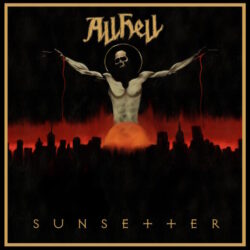
Video Premiere: All Hell – “Sunsetter”
Hear Asheville black ’n’ roll punishers All Hell stomp through the grinding title track to their upcoming album, Sunsetter.
The post Video Premiere: All Hell – “Sunsetter” appeared first on Decibel Magazine.
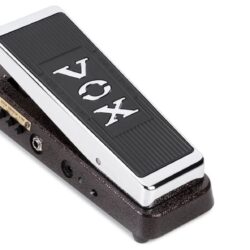
Vox V863-CA Review
A 3-in-1 wah, envelope follower, and envelope controller that opens up a huge range of filtering possibilities.As an avid—perhaps rabid—musical psychedelicist, I’ve had a lot of wah in my life. Maybe too much. In recent years, I seem to have had my own personal version of the rock world’s 1968 epiphany, where everyone ditched their wah and fuzz, moved to the country, and put Music from Big Pink on constant replay. Recently, though, I’ve been in touch with my wah side again—this time by way of JJ Cale’s chilled out swells and Curtis Mayfield’s mellower wah flourishes. And through these applications of treadle-actuated filtering, I’ve rekindled my love for the more psychotic side of the effect. Vox’s V863-CA will happily wind along either the gentle path or the hard road. It has a nuanced filter taper that makes slow, focused sweeps sound sweet and vocal, and it responds to quick-twitch moves with precision. But the real magic in the V863-CA is its combination of envelope generator (auto wah) and envelope follower functions, as well as its ability to switch between wah and the two filtering modes merely by lifting your foot from the treadle.It Just Takes A TouchYou can only use either the envelope generator/wah combination or the envelope follower/wah combo at any given time—a small price to pay for the versatility at hand here. You can, however, select between those two modes with a small mini toggle on the lower left side of the enclosure—which, incidentally, seems well out of the way of accidental triggering. There is a third position for wah only, which is useful for accessing cocked wah tones. But you can switch any of the effects into bypass mode with a click in the toe-down position.Vox’s V863-CA will happily wind along either the gentle path or the hard road.Inspired by Dead and Company’s recent shows celebrating the Grateful Dead’s 60th anniversary, I explored the envelope follower section of the V863-CA in honor of Jerry Garcia. The V863-CA performs admirably in this capacity. Using the polarity switch, you can shape the filter’s reaction to a dynamic trigger. In one mode the filter’s voice opens with a “wow”-like tonality; in the opposite polarity it yields a snappier effect. It’s a pretty sweet-sounding envelope filter, too—particularly in the more open, vowelly, Garcia-like mode. The sensitivity control, which governs the filter’s reaction to picking dynamics, isn’t the most nuanced, and I preferred to keep the sensitivity wide open and control the sound via my picking and guitar volume (which can dull the dynamic response if you turn down too much). Still, the biggest thrill of using the envelope follower mode was the ability to launch from a chilled, quacky, Garcia run to Eddie Hazel “Maggot Brain” intensity just by putting my foot on the treadle. This is a genuinely inventive feature that will open up possibilities to players outside the psychedelic sphere.The envelope generator, or auto wah function, can be shaped with both the decay control and the attack knob, which manipulate the filter’s reactivity. (Both knobs have useful center detents). Between the two controls you can craft syrupy response for spacey, slow jams (delicious with loads of delay) or snappy, funky interactions that will keep up with rapid-fire Nile Rodgers-style licks.
At $279, Vox’s Vietnam-made V863-CA seems expensive until you dig deep into its bag of tricks. And though it might appear specialized, I had little problem finding novel uses of the combination effects that broke the funky and acid-fried wah molds and led to more unusual ends. But the coolest part of the V863-CA experience remains the ability to seamlessly move from wah to filtering functions simply by lifting one’s foot. It’s a smart way to shift between verse, chorus, and solo segments without tap dancing between multiple pedals. The same functionality can generate dramatic changes in mood and dynamic, inspiring whole compositions and arrangements. In that respect, the V863-CA delivers value in abundance.
Full EP Stream: Caesarean – “Wretched Decrepitude”
Gory, thrashy death metal outfit Caesarean worship at the altar of old school on their new EP.
The post Full EP Stream: Caesarean – “Wretched Decrepitude” appeared first on Decibel Magazine.
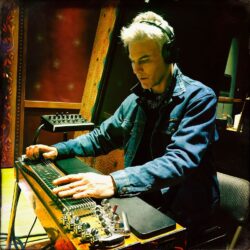
Red Light Fright
In the 1999 cult classic Mystery Men, Invisible Boy has a superpower that’s as hilarious as it is relatable: He’s invisible, but only when no one’s looking. The moment eyes are on him, he’s just a kid in a cape, exposed and ordinary. Musicians, doesn’t that hit home? When it’s just you and your guitar, the music flows like a river—raw, unfiltered, alive. But flip on the studio’s red light or face a sea of cell phones at a gig, and that river can dry up fast. It’s the red light paradox: The act of capturing inspiration often chokes it.Players like Marcus King, Masayoshi Takanaka, and Tom Bukovac seem to live in that effortless zone, channeling endless streams of soulful licks. Alone in a room, you might tap into that, too—those late-night jams where riffs cascade and ideas feel infinite. No stakes, no judgment. Only creation. But in the studio, that red light is a judge with a gavel. Every note feels etched in stone, ready for eternal scrutiny. The ticking clock, the producer’s glance, the knowledge that a single take could live forever—it’s enough to stall the flow.I’ll never forget filming a Rig Rundown with Thom Bresh in 2020. Thom was an absolute legend with talent that drove an incredible seven-decade career. Before we started, I said, “Hey Thom, want to play something going into the interview?” He paused, grinned, and replied, “Been playing my entire life, but the minute somebody asks me to play, I got nothing. My mind goes blank.” If a giant like Bresh could feel that pressure, what hope is there for the rest of us mere mortals? It’s proof that the red light doesn’t discriminate.“It’s not about nailing every note; it’s about capturing something true.”Live music, though, is a different beast. There’s freedom in the fleeting moment. The crowd’s energy, the vibe with bandmates, the knowledge that a flubbed note vanishes by the next song—it all invites risk. I’ve seen players, myself included, get bold onstage in ways we’d never try in the studio. You’ll stretch a phrase, chase a wild harmony, or lean into a bend that might not land, because it’s yours and it’s gone in minutes. It’s a tightrope walk with a net, letting you attempt crazier tricks.In the studio, that net’s gone. The red light means evidence—permanent, unerasable. Every take is a potential exhibit in the court of public opinion. (Even onstage now, since a phone clip can haunt you online until our hypothetical ape overlords unplug the internet.) It makes you play it safe. I do it—sticking to solid takes to avoid being “that guy” holding up the session. If the bassist or keyboardist wants another pass, I’m right there—not always because I hate my take, but for insurance. Just in case there’s a gremlin in the mix—a flubbed note, a shaky vibrato, or a phrase that felt cool but now sticks out like a bad tattoo.That self-consciousness isn’t just about avoiding mistakes; it’s the weight of permanence. Live, a missed note is usually a blip, forgotten by the encore. In the studio, it’s a ghost that could haunt you. I’ve heard players nail a take only to spend hours second-guessing it, not because it’s bad, but because it might not be perfect. And perfection, we all know, kills vibe. The studio’s a paradox: it’s where you immortalize art, but the process can drain its soul.”That self-consciousness isn’t just about avoiding mistakes; it’s the weight of permanence.”So how do you beat the red light curse? Some players treat the studio like a live gig—dim the lights, imagine a crowd, or track live off the floor to capture that loose, communal energy. Others prep relentlessly, woodshedding parts so the light can’t rattle them. Bukovac, in a Homeskoolin’ video, talks about playing like you’re “just messing around,” even in high-stakes sessions. Easier for a guy who bleeds licks, but there’s truth there: The less you fear the light, the freer you play. I’ve tried picturing it as a vibe check, not a verdict, but it’s tough when Thom Bresh’s words echo. Even legends go blank under pressure.
Maybe the answer lies in embracing the imperfection the red light exposes. Live, we forgive ourselves because the moment’s gone. In the studio, we must forgive ourselves knowing the moment’s forever. It’s not about nailing every note; it’s about capturing something true. Next time you’re in the booth, staring down that glowing red eye, channel Invisible Boy. Shrug off the gaze and play like no one’s watching. Because the only judgment that matters is whether the music moves you. If it does, it’ll move someone else, too
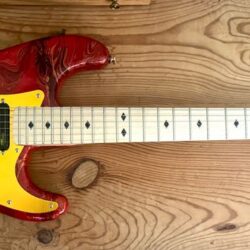
A Psychedelic Swirl S-style Honors a Lucky Black Cat
Reader: Cary CummingsHometown: Seattle, WAGuitar: Catocaster“The problem with cats is they get the exact same look whether they see a moth or an axe murderer.” —Edgar Allen PoeLeroy had the courage to live on this earth for 19 1/2 years.I had no idea what to expect when we arrived at the live animal will-call area at the airport. I knew I was picking up a 12-week-old Burmese kitten. When they brought out his little crate carrier, I was nervous and excited. But when I opened the door to peek inside and greet our new arrival, I saw a shockingly tiny, scared little creature that could fit in the palm of my hand, and I felt so bad that he was put through such an ordeal. He seemed pretty calm about the whole thing.“Leroy liked flashy things, chaos, and movement.”At his full-grown eight pounds, Leroy was the patriarch of our household and animal family. Over the course of his days, he lived and played with six different labrador retrievers, outliving three of them. He was everyone’s buddy and tormentor in equal measure. He slept on his bed when he wanted, curled up on a dog’s tummy, or on one of our heads. He loved to play fetch, knock over unattended glasses full of water, and relished a 90 mph sneak attack as we descended the stairs. He loved us, but often reminded us that we really lived in his world and he could take us out at any time. If he had been as big as one of the dogs it would have been terrifying. Sometimes it was terrifying anyway.I built this guitar to remember and honor Leroy. He liked flashy things, chaos, and movement. He also loved “helping” change guitar strings and occasionally trying to swallow them. This build consists of a S-style poplar body from Ultratouch Guitars in Texas and a Warmoth quarter-sawn S-style neck with a Clapton carve and 6150 frets. I sprayed the body with a primer coat, followed by apple-red satin, and finished it off with Rustoleum red glitter to give it some sparkle. To add interest and movement, and a little chaos, I dipped it into a 32-gallon garbage can filled with water topped with a swirl of Magic Marble paint, finally sealing it in with 10 coats of wipe-on poly.The finishing touch included an orange anodized pickguard, Wilkenson/Gotoh VSVG tremolo bridge, Wilkenson low gauss, blade style pickups, 250k CTS pots, 0.015 uF ceramic disk capacitors, Gotoh gold tuners, and a dangerous cat decal on the headstock.I like to imagine Leroy somewhere over the rainbow bridge playing with his friends: Charlie, Dewey, and Olive. I hope to find them again one sunny day. I know Leroy would approve of this guitar and probably give me another sneaky needle-toothed surprise attack to celebrate.
Read more »
Rig Rundown Best Of: Legendary Gibson ES-335 Stories and Setups
From Tom Bukovac’s first-year ’58 to Larry Carlton’s iconic ’69 and Molly Miller’s well-worn ’78, this PG best-of Rig Rundown celebrates the artists who made the ES-335 their own. Hear Charlie Worsham’s Vince Gill gift story, Tim Pierce’s player-grade philosophy, and Sturgill Simpson’s stage-shaking tones—plus why so many pros trust this semi-hollow classic.
Gibson ES-335 Satin Semi-Hollow Electric Guitar Satin Cherry
$2999.00
Guitar Center
$2999.00
Sweetwater Sound
.rbm-pick {
display: grid;
grid-template-columns: 160px 1fr;
gap: 16px;
align-items: center;
border: 1px solid #e6e6e6;
border-radius: 12px;
padding: 16px;
}
/* Media box — no cropping, no edge kiss */
.rbm-pick-media {
height: 180px; /* fixed height for consistency */
padding: 8px; /* breathing room to avoid flat-cut edges */
box-sizing: border-box; /* keep total height = 180px */
border-radius: 10px;
background: #fff;
overflow: hidden;
display: flex;
align-items: center;
justify-content: center;
}
.rbm-pick-media img {
max-width: 100%;
max-height: 100%;
width: auto; /* preserve aspect */
height: auto;
object-fit: contain; /* never crop */
object-position: center;
display: block;
}
.rbm-badge {
display: inline-block;
font: 600 12px/1.2 system-ui;
padding: 4px 8px;
border-radius: 999px;
background: #111;
color: #fff;
margin-bottom: 8px;
}
.rbm-title {
font: 700 18px/1.3 system-ui;
margin: 4px 0 8px;
}
.rbm-blurb {
font: 400 14px/1.5 system-ui;
color: #333;
margin-bottom: 12px;
}
.rbm-pick-buttons {
display: flex;
gap: 8px;
flex-wrap: wrap;
}
.rbm-pick .rbm-btn {
display: inline-flex;
gap: 6px;
align-items: center;
border: 2px solid #b50000; /* Premier Guitar red */
border-radius: 999px;
padding: 10px 16px;
text-decoration: none;
font: 600 14px/1.2 system-ui;
color: #b50000;
background: #fff;
box-shadow: 0 2px 5px rgba(0,0,0,0.12);
transition: background .2s, color .2s, transform .15s;
}
.rbm-pick .rbm-btn:hover {
background: #b50000;
color: #fff;
transform: translateY(-1px);
}
.rbm-pick .rbm-btn .price {
opacity: 1;
font-weight: 600;
}
/* Responsive tweaks */
@media (max-width: 540px) {
.rbm-pick { grid-template-columns: 1fr; }
.rbm-pick-media { height: 160px; padding: 6px; }
}
@media (min-width: 900px) {
.rbm-pick-media { height: 200px; }
}
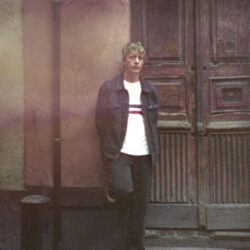
Steve Gunn Announces Daylight Daylight; Shares “Nearly There”
Steve Gunn has been at the vanguard of American experimental / guitar-oriented rock music for over a decade. After a trio of acclaimed albums recorded for Matador, Gunn will release his 7th studio record – and first in 4 years – on November 7th.With Daylight Daylight, Gunn wanted to capture something of the intimacy of playing solo, the sense of possibility and discovery that sparks when he sits down to write, while also creating a rich sonic world for the listener to inhabit. Rather than pulling together a band to flesh the songs out, as he’s done on previous albums, he enlisted a single primary collaborator: producer James Elkington, an old friend and longtime collaborator (who also produced Gunn’s 2019 album The Unseen In Between). Elkington is known as a guitarist, but Gunn asked him to contribute arrangements of strings and woodwinds, inspired in part by the music they’ve talked about over the years (ie. Mark Hollis, Ennio Morricone, The Fall, Basil Kirchin) and the evolution of their own relationship making records – both together, and with others. They soon found a fruitful working process for Daylight Daylight: Gunn would record solo demos and send them to Elkington, who had free rein to develop the arrangements on his own. Working primarily out of Elkington’s Nada Studios in Chicago, they would continue adding from there—a whisper of a synthesizer, a guitar overdub, a muted percussion line—but they were committed to the relative spareness of their initial approach. Macie Stewart (violins and viola), Ben Whiteley (cellos), Nick Macri (upright bass) and Hunter Diamond (woodwinds) also contributed. Listen to the album opener “Nearly There” today: noquarter.lnk.to/nearlythere And pre-order Daylight Daylight at the link below: noquarter.lnk.to/daylightdaylight Tracklisting:Nearly ThereMorning on K RoadAnother FadeHadrian’s WallDaylight DaylightLoonA WalkGunn will tour the UK and Europe in October and November and is announcing a run of US dates today. Sept 11 – Chicago, IL @ Sound & Gravity FestivalSept 25 – Kingston, NY @ Tubby’s Oct 23 – London, UK @ St. Mathias *Oct 24 – Glasgow, UK @ Hug and Pint *Oct 25 – York, UK @ The Band Room *Oct 26 – Shropshire, UK @ Firefly *Oct 28 – Stockholm, Sweden @ stadsgardsterminalenOct 29 – Göteborg, Sweden @ PustervikOct 30 – Oslo, Norway @ BlaOct 31 – Kristiansand, Norway @ Dirty Old TownNov 1 – Stavanger, Norway @ FolkenNov 2 – Bergen, Norway @ KunsthallNov 9 – Sétubal, Portugal @ Forum Luisa TodiNov 14 – Dranouter, Belgium @ DranouterNov 15 – Turnhout, Belgium De Warande Dec 3 – Philadelphia, PA @ Johnny Brenda’sDec 4 – Baltimore, MD @ MetroDec 5 – Raleigh, NC @ King’sDec 6 – Washington, DC @ DC9Dec 10 – Portsmouth, NH @ The Press RoomDec 11 – Portland, ME @ SpaceDec 17 – New York, NY @ Le Poisson RougeJan 1 – Sawyer, MI @ Out ThereHan 14 – Seattle, WA @ The Triple DoorJan 15 – Vancouver, BC @ The Fox CabaretJan 17 – Portland, OR @ Polaris HallJan 20 – San Francisco, CA @ Café Du NordJan 21 – Santa Cruz, CA @ The Crepe PlaceJan 22 – Ojai, CA @ Deer LodgeJan 23 – Los Angeles, CA @ The Lodge RoomJan 25 – Pioneertown, CA @ Pappy’s & Harriet’s *w/ James Elkington
Read more »